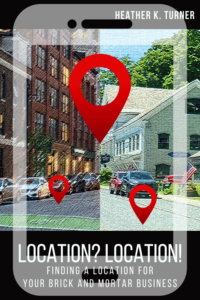Questions #16-20 on 50 Questions to Ask a Business Broker When Selling a Business
 Additional information on each question from 50 Questions to Ask a Business Broker When Selling a Business
Additional information on each question from 50 Questions to Ask a Business Broker When Selling a Business
Q16. How will you market my business to potential buyers?
Why should you ask this?
A strong marketing strategy (e.g., leveraging industry-specific networks, confidential listings, or targeted outreach to private equity groups) can significantly expand the pool of potential buyers. Make sure they are using methods that effectively reach the right audience. A strategic marketing plan is essential for attracting the right buyers and achieving the highest sale price. Understanding how your broker intends to market your business gives you a lot of insight into their approach and reach.
Good brokers typically employ a variety of marketing tactics to promote a business. Ask if they plan to use confidential business-for-sale websites, industry-specific networks, or do direct outreach to their network of buyers. For larger or niche businesses, brokers may also work with private equity groups, strategic buyers, or even international markets.
Ask about the level of detail they’ll include in their marketing materials (executive summaries, teaser documents, and information memorandums) to attract serious buyers without revealing sensitive information too early.
Q17. What types of buyers do you typically attract (strategic, financial, individual)?
Why should you ask this?
Understanding the broker’s network of buyers is crucial in determining if they can connect you with the right buyer. Strategic buyers (companies in the same or related industries) may pay more for a business, while financial buyers (private equity firms, investors) often focus on a businesses profitability and scalability. Individual buyers may have different expectations regarding price and after the sale involvement.
Different types of buyers, such as strategic or financial buyers, have unique motivations and expectations. Your broker should find buyers who will help you achieve your goals, whether that’s getting the highest price, keeping your company’s culture, or something else important to you.
Ask the broker what percentage of their past deals have involved strategic buyers versus financial buyers or individual investors. This will give you some insight into their existing network and the types of potential buyers they’re familiar with.
For example, a strategic buyer might value your business for its customer base or technology, while a financial buyer might prioritize cash flow. The right type of buyer will depend on your goals, whether you’re looking for maximum cash upfront, a quick exit, or ongoing involvement. Ensure that the broker’s typical buyer base aligns with your desired outcome.
Q18. What online platforms do you use to promote listings?
Why should you ask this?
A broker’s online presence can reveal how modern and up to date their own marketing strategies are, and that can often mirror what they will do to promote your business.
A broker’s choice of online platforms significantly impacts how effectively their business is marketed to potential buyers. In today’s digital world, a broker’s online presence is a key indicator of their marketing reach, strategic approach, and ability to connect with a wide range of buyers. By understanding the platforms they use, you can assess whether they have the tools and resources to maximize your business’s visibility.
Brokers typically use a mix of industry-specific marketplaces, general business-for-sale websites, social media, and other digital strategies to attract qualified buyers. Here’s an overview of some commonly used online platforms and their benefits:
1. Business-For-Sale Marketplaces
These platforms list businesses on the market, attracting individual buyers, private equity firms, and strategic acquirers seeking acquisitions.
Some popular platforms include:
BizBuySell is one of the largest and most recognized online marketplaces for buying and selling businesses. With millions of monthly visitors, listing your business here ensures wide visibility and access to a large pool of potential buyers, from individuals to private investors.
BizBuySell enables brokers to add detailed business information while protecting confidentiality. They also offer tools for managing inquiries, which can help filter out unqualified buyers early in the process.
Another leading platform for listing small and mid-sized businesses, BusinessBroker.net attracts a broad audience of buyers and investors. A broker who lists on this platform can provide additional exposure, particularly if your business falls within a popular industry category.
This platform includes resources like valuation tools, making it appealing to buyers looking for detailed insights, and helping your broker engage with more qualified leads.
Although primarily known for commercial real estate listings, LoopNet also includes business sale listings, especially those that include real estate components. This platform is beneficial if your business involves significant real estate holdings or physical assets that need to be highlighted as part of the sale.
LoopNet reaches buyers who are specifically interested in businesses with real estate, which can enhance the appeal of listings that have an asset-based component.
This global platform provides access to a diverse international buyer base, making it particularly useful if you’re open to international buyers or if your business operates in industries with global appeal (e.g., technology, hospitality).
The international exposure of BusinessesForSale.com allows your business to reach buyers beyond your local market, increasing the chances of finding a buyer with specific expertise or a strategic interest in your business.
Crexi (Commercial Real Estate Exchange, Inc.) focuses on commercial real estate transactions but is also useful for businesses tied to real estate, such as retail, hospitality, or industrial operations.
Known for its user-friendly interface and analytics tools, Crexi helps sellers market properties effectively while providing buyers with detailed insights. It’s ideal for those seeking a modern, data-driven platform for business-related property transactions.
2. Private Equity and Investor Networks
Besides general marketplaces, many brokers will also target private equity firms, venture capitalists, and high-net-worth individuals through specialized platforms. If your business is larger, growing quickly, or has high profitability, these networks are crucial.
Axial is a platform that connects small to mid-market businesses with private equity firms, family offices, and strategic acquirers. If your broker is using Axial, it shows that they are actively targeting financial and strategic buyers who are looking for businesses to invest in or acquire.
Axial’s network of professional buyers is particularly attractive for businesses looking for growth capital, partnerships, or partial exits. If your business is appealing to institutional investors, listing on Axial increases your chances of connecting with sophisticated, qualified buyers.
DealStream, (formerly MergerNetwork) is another platform used by brokers to connect with private investors, mergers and acquisitions (M&A) firms, and industry-specific buyers. It’s known for attracting a more professional buyer pool than general business-for-sale sites.
This platform serves higher-end deals, making it more suitable for businesses with substantial revenue or strategic value. If your broker uses this platform, it shows they are aiming to connect your business with institutional buyers or strategic acquirers rather than individual investors.
3. Social Media Marketing
Social media has become an increasingly important tool for business brokers to promote listings and connect with a wider audience. Effective use of platforms like LinkedIn, Facebook, and X (formerly Twitter) can show a broker’s ability to modernize their approach and reach tech-savvy buyers.
LinkedIn is a powerful tool for reaching professional buyers, including executives, strategic acquirers, and private equity groups. Brokers who actively promote listings on LinkedIn can tap into a network of professionals who may be interested in acquisitions to grow their own companies or investment portfolios.
LinkedIn also allows brokers to join relevant industry groups, publish articles, and connect with potential buyers directly, which can give your business exposure to a more targeted audience. If your business operates in a B2B or professional services space, LinkedIn can be especially useful.
While primarily a social platform, Facebook is used by brokers to reach individual buyers and investors. Brokers might create targeted ads or post listings in industry-related groups.
Facebook’s robust ad targeting allows brokers to tailor their promotions based on location, industry, and buyer behavior, reaching potential buyers who may not be actively searching business-for-sale platforms but are still interested in entrepreneurial opportunities.
4. Search Engine Optimization (SEO) and Paid Advertising
Many modern brokers go beyond traditional listing platforms and use digital marketing techniques such as SEO and paid search advertising, to increase visibility.
Search Engine Optimization (SEO)
SEO allows brokers to rank their listings higher in search engine results when potential buyers are searching for relevant business opportunities. For example, a broker with a strong SEO strategy might ensure that when someone searches “businesses for sale in X industry” or “buy a company in Y location,” your business listing appears at the top of the search results.
SEO helps attract organic traffic from qualified buyers who are actively looking for business opportunities, driving more attention to your listing without additional advertising costs.
A good broker won’t just concentrate on Google, but also focus on Bing (Alexa from Amazon draws a lot of information from Bing among some other content sources) and lesser search engines.
Google Ads (Paid Search Advertising)
Paid search advertising (e.g., Google Ads) allows brokers to promote your listing directly to potential buyers based on their search queries. If your broker uses paid ads, they can target specific keywords and demographics to ensure your listing appears in front of qualified buyers.
Google Ads can generate immediate visibility for your business listing, especially in competitive markets where organic traffic alone might not be enough. Paid ads also offer geographic targeting, ensuring your listing reaches buyers in specific regions or countries.
5. Industry-Specific Websites and Platforms
Besides general business-for-sale platforms, some industries have niche websites and forums where people buy and sell businesses. A broker with industry expertise may use these specialized platforms to attract buyers with a specific interest or expertise.
Franchise Direct (for franchises)
If your business is part of a franchise, brokers may list it on franchise-specific platforms like Franchise Direct. These platforms attract buyers specifically looking for franchise opportunities, ensuring your business is seen by the right audience.
Franchise-specific platforms have buyers who are familiar with the franchising model and are likely to be more serious and knowledgeable about the requirements and costs associated with buying a franchise.
BizQuest is an industry-specific site that caters to certain types of businesses, such as restaurants, retail, and manufacturing companies. It attracts buyers who are specifically looking for businesses within these industries.
BizQuest’s focus on specific sectors means that it often draws more qualified buyers with industry knowledge and experience, which can lead to quicker and more informed negotiations.
Q19. Do you have an existing network of potential buyers or sellers? Do you maintain a database of qualified buyers, or will you be reaching out to new prospects?
Why should you ask this?
While confidentiality may prevent the broker from disclosing specific buyer identities, they should be able to provide evidence of their network.
A broker with an established network of qualified buyers can streamline the selling process, while one without such a network might take longer to find suitable candidates. A strong, relevant network enhances the chances of a quick sale at a favorable price.
Some brokers have access to large, targeted databases of buyers, including strategic, financial, and individual buyers, while others may rely more on outreach and advertising. If a broker has a pre-vetted list of buyers, this can significantly speed up the process. Ask them for details about their database—such as the size of the list, how often it’s updated, and whether they can tailor it to specific industries or locations. If they mainly source new prospects, inquire about their process for qualifying buyers and ensuring they are serious and capable of completing the deal.
Q20. What services do you provide during the due diligence process?
Why should you ask this?
How will the broker assist with making the due diligence (DD) process smoother? Do they have a checklist of essential due diligence items? Will the broker serve as the main point of contact and project manager throughout the due diligence period, so you don’t have to manage it yourself?

 Additional information on each question from
Additional information on each question from 
 Additional information on each question from
Additional information on each question from


